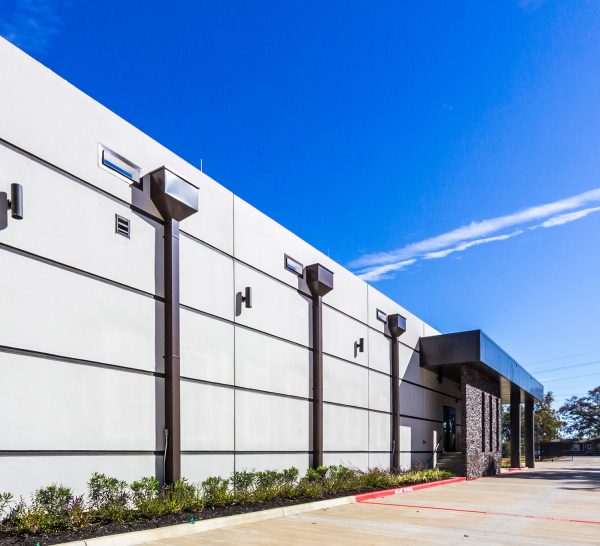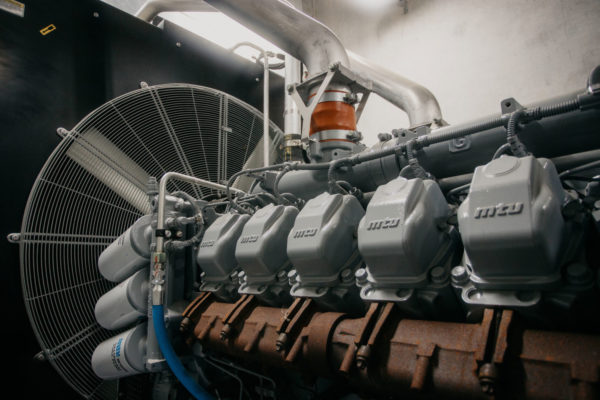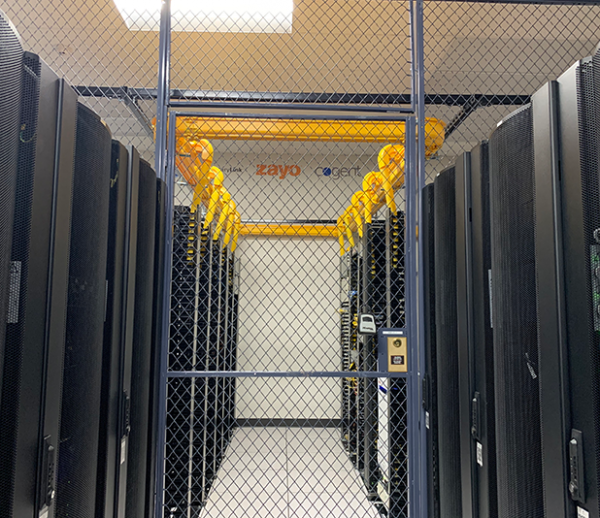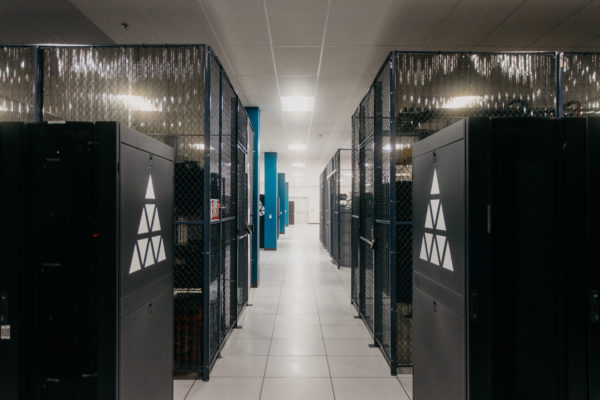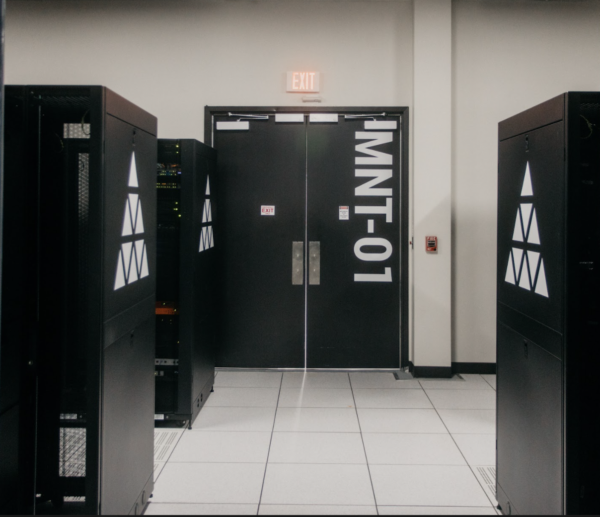Data centers are the backbone of modern digital infrastructure, providing a level of efficiency that was once unthought of.
However, the capability these hubs of data storage and processing offer hinges on the quality of their layouts and overall sense of flow.
Understanding the intricacies of data center architecture will help you design functional storage systems that support your business needs now and in the future.
Below, we’ll explore everything you need to know about the concept.
What is Data Center Architecture?
Data center architecture refers to the physical layout of a data center. It encompasses the hardware, software, network resources, and services required to support a company’s computing needs.
It also ensures that a data center can efficiently and securely manage, store, and disseminate vast amounts of data.
The best data center architecture will simplify all aspects of data center management, from ensuring you’ve got a stable backup power source to monitoring the cooling of servers and maintaining adequate network security.
Composition of Data Center Architecture
Your data center will consist of several layers, including the following:
- Network Architecture: Networking hardware and software for seamless access
- Security Architecture: Measures like firewalls, encryption, and physical barriers to protect your data
- Computing Resources: Servers and virtualization technologies
- Storage Systems: Direct-attached, network-attached, or storage area networks
- Facilities and Support Infrastructure: Cooling systems and monitoring equipment
Together, these components create a resilient, scalable, and secure environment capable of meeting your organization’s data management needs.
But two are arguably the most important: network and security architecture.
Data Center Network Architecture
Network architecture focuses on the design and organization of hardware and software to enable communication and information exchange.
It encompasses routers, switches, firewalls, and load balancers, as well as the physical cables and connections these devices require.
Think of your network as the foundation of the data center. While storing data is a critical component of any facility, you can’t simply store information away.
It must be readily accessible, which is where a sound network architecture comes into play. Your goal is to create a resilient, high-performance network that can handle heavy traffic and provide seamless connectivity.
Data Center Security Architecture
Security is paramount in the world of data centers. As a component of data center architecture, it involves implementing measures to protect your information and infrastructure from threats, such as:
- Firewalls
- Intrusion detection and prevention systems
- Encryption
- Access control mechanisms
While much of your security architecture will consist of virtual measures, you must also implement physical barriers to prevent unauthorized access.
Security cameras, keypad-based locks, and 24/7 monitoring are a few valuable tools that can help protect your business from illicit activities.
Evolution of Data Center Architecture
Initially, data centers were small, on-premises facilities with limited and rudimentary networking capabilities. Any time a business needed to scale up, it would have to make significant investments in hardware and infrastructure redesigns.
As the demand for data storage and processing grew, so too did the complexity and scale of data centers. Introducing virtualization, cloud computing, and advanced networking technologies transformed data centers into highly sophisticated and scalable operations.
Types of Data Center Architecture
There are four main types of data center architecture, which are as follows:
Mesh Network
A mesh network architecture directly connects all of your data center’s devices, creating multiple pathways for data to travel through. It is a design that offers high redundancy and fault tolerance, ensuring continuous network availability even if one of your links fails.
Beyond that, the primary benefits of a mesh network include enhanced reliability and robust performance. They are also exceptionally scalable.
For example, let’s say that one of the cables between two of your servers becomes damaged.
Thanks to the mesh network, data could automatically be rerouted through one of the undamaged cables, allowing you to enjoy uncompromised access to all of your servers and computing power.
Multi-Tier Model
Multi-tier models segregate your network into layers. Typically, these layers include a core, aggregation, and access. Each performs specific functions, such as optimizing traffic flow and improving manageability.
These models are often favored for their scalability. Troubleshooting is also simplified, as you won’t have to sift through every device in your entire network.
If a problem arises, you will know which layer it is located in, meaning you can easily focus your troubleshooting efforts on just those devices.
Mesh Point of Delivery
Mesh points of delivery (PoDs) combine the strengths of the previous two models. Each modular unit, or PoD, has its own network, storage, and computing resources. These PoDs are then interconnected to form a more extensive data center network.
Setting up a PoD framework requires a larger investment of time and resources. However, you will enjoy long-term benefits such as ease of management and flexibility.
Super Spine Mesh
A super spine mesh enhances the traditional mesh concept by adding a layer made up of spine switches. These are high-capacity networking devices used in large-scale facilities.
They form the backbone of a spine-leaf architecture, where each spine component connects to multiple leaf switches. The leaves connect to servers or other network devices.
A super spine mesh network offers exceptional bandwidth and low latency. If you require fast data processing and minimal delay, a super spine approach may be the most pragmatic solution, especially as the use of spine switches becomes more widespread as data consumption increases.
Types of Data Center Storage Architecture
The next aspect of data center architecture is storage infrastructure. These are the three main approaches for configuring your storage resources:
Direct-Attached Storage
Direct-attached storage (DAS) connects storage devices directly to the servers, hence the name. It’s a simple and cost-effective solution for small centers or specific applications that require dedicated storage, but it lacks scalability and flexibility.
If you have predictable long-term storage needs and require a dedicated solution, a direct-attached approach to storage may be suitable. However, rapidly growing businesses will most likely find DAS to be too rigid.
Network-Attached Storage
Network-attached storage (NAS) provides shared storage access over a network, and its devices are easy to deploy and manage.
They are suitable for environments needing shared access to data across multiple servers and users. They also offer greater flexibility and scalability than DAS.
Storage Area Storage
A storage area network (SAN) provides exceptional performance and scalability. It uses a dedicated network for storage traffic to offer faster data transfer rates and improved reliability.
This approach to data center storage architecture is ideal for enterprise environments with extensive storage requirements and critical applications.
Types of Cloud Data Center Architecture
Cloud data centers have become an invaluable resource for businesses of all sizes. There are three main types of cloud architecture, which include the following:
Private Cloud Data Center
A private cloud data center is dedicated to a single organization, and it offers exceptional security and total control over resources.
Private cloud data centers are, therefore, ideal for larger organizations with stringent regulatory requirements or those that need to keep sensitive data under direct control while still looking to benefit from the cloud’s flexibility.
Many third-party service providers offer private cloud hosting solutions. You can also set up your own cloud data center, though that is exceptionally costly.
Public Cloud Data Center
A public cloud data center is one owned and operated by third-party providers. It offers scalable, cost-effective solutions for businesses of all sizes, and (perhaps most appealing), you only pay for what you use.
You won’t incur a heavy upfront investment of resources, which provides better accessibility while keeping your recurring data management costs down.
Public clouds provide a range of services and resources. There are storage-only options, fully managed clouds, and many other options in between. Top providers will customize the scope of their services to align with your company’s unique needs.
You can even outsource certain security and backup tasks to alleviate your data management challenges.
Hybrid Cloud Data Center
A hybrid cloud data center combines on-premises and cloud-based architecture. You can store certain data in private servers located within your data center to meet regulatory requirements while routing other information to your public cloud.
The public component of your architecture will also provide scalable resources and additional computing power on demand.
Say, for instance, that you need the peace of mind that a private cloud provides, but storing all of your company data on it would be cost-prohibitive.
In that case, you could implement a small private cloud to handle especially sensitive information while relying on a hosting service to meet all of your other computing needs via a public cloud environment. You would enjoy long-term cost savings while also optimizing security.
Innovations in Modern Data Center Architecture
Data center architecture is constantly evolving. Here are just three of its most exciting developments:
Edge Data Centers
Edge data centers bring computing resources closer to end-users, offering lower latency and better performance.
Smaller, localized data centers are essential for applications requiring real-time processing, such as autonomous vehicles and Internet of Things (IoT) devices.
Edge data centers also seek to promote information accessibility. Smaller facilities are easier to build and maintain, making it possible to position them in rural areas that don’t traditionally have access to high-speed computing capabilities.
Containerization
Containerization is a modern approach to deploying and managing applications in data centers. It involves packaging applications and their dependencies into containers, which can run consistently across different environments.
Containerization does the same thing for software as packing for a trip: It packages an application and everything it needs to run, including its code, libraries, and settings, into one container.
You can run the container on any computer, and it will work the same way. You won’t have to reconfigure it each time you run the app on a new device or network.
Sustainable Data Centers
One aspect that has gained significant focus in the data center environment is sustainability.
Data centers consume huge amounts of power, and the rapid surge in demand for data storage and computing solutions has drastically increased the industry’s carbon footprint.
Center managers, therefore, must balance the need for sustainability with their facilities’ performance demands. While there are many challenges left to overcome, the industry is making significant progress toward greener, cleaner operations.
Sustainability initiatives are at the forefront of that push, incorporating more efficient cooling systems and advanced power management techniques. Many centers are also exploring renewable energy sources, like solar, to power some of their equipment.
Why is Data Center Architecture Important?
Data center architecture represents a critical part of designing and building your own data center. By being mindful of your architecture and layout, you can ensure your facility meets your company’s demand for data processing and storage.
A well-designed facility will also enhance your company’s long-term performance and equipment longevity. The easier it is to maintain your hardware, the better your return on investment (ROI) and the lower your risk of unplanned downtime.
Your data center’s security architecture will also have a direct impact on compliance and help protect your company’s reputation.
Learn More About Data Center Architecture Today
No matter the size of your business or the industry it operates within, data represents one of your most valuable commodities.
Data center architecture has a direct impact on the security and accessibility of your business data, and having a clear understanding of it will help you make informed decisions when meeting your company’s processing, storage, and computing needs.
Contact our team today to get a quote on our data center services. Explore our data center checklist to learn more about essentials like architecture and network infrastructure.
Looking for colocation?
For an unparalleled colocation experience, trust our expert team with three generations of experience

